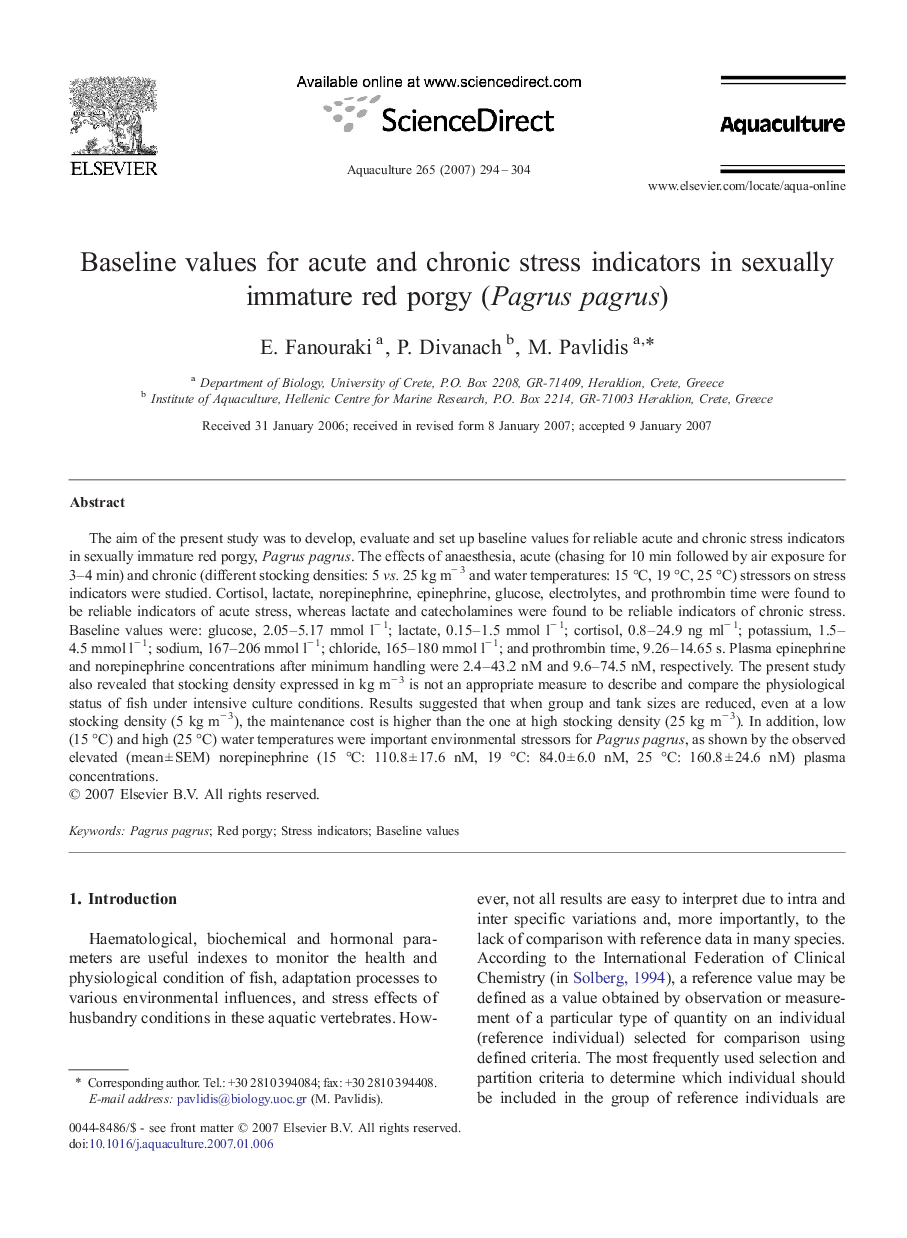| Article ID | Journal | Published Year | Pages | File Type |
|---|---|---|---|---|
| 2425635 | Aquaculture | 2007 | 11 Pages |
The aim of the present study was to develop, evaluate and set up baseline values for reliable acute and chronic stress indicators in sexually immature red porgy, Pagrus pagrus. The effects of anaesthesia, acute (chasing for 10 min followed by air exposure for 3–4 min) and chronic (different stocking densities: 5 vs. 25 kg m− 3 and water temperatures: 15 °C, 19 °C, 25 °C) stressors on stress indicators were studied. Cortisol, lactate, norepinephrine, epinephrine, glucose, electrolytes, and prothrombin time were found to be reliable indicators of acute stress, whereas lactate and catecholamines were found to be reliable indicators of chronic stress. Baseline values were: glucose, 2.05–5.17 mmol l− 1; lactate, 0.15–1.5 mmol l− 1; cortisol, 0.8–24.9 ng ml− 1; potassium, 1.5–4.5 mmol l− 1; sodium, 167–206 mmol l− 1; chloride, 165–180 mmol l− 1; and prothrombin time, 9.26–14.65 s. Plasma epinephrine and norepinephrine concentrations after minimum handling were 2.4–43.2 nM and 9.6–74.5 nM, respectively. The present study also revealed that stocking density expressed in kg m− 3 is not an appropriate measure to describe and compare the physiological status of fish under intensive culture conditions. Results suggested that when group and tank sizes are reduced, even at a low stocking density (5 kg m− 3), the maintenance cost is higher than the one at high stocking density (25 kg m− 3). In addition, low (15 °C) and high (25 °C) water temperatures were important environmental stressors for Pagrus pagrus, as shown by the observed elevated (mean ± SEM) norepinephrine (15 °C: 110.8 ± 17.6 nM, 19 °C: 84.0 ± 6.0 nM, 25 °C: 160.8 ± 24.6 nM) plasma concentrations.
